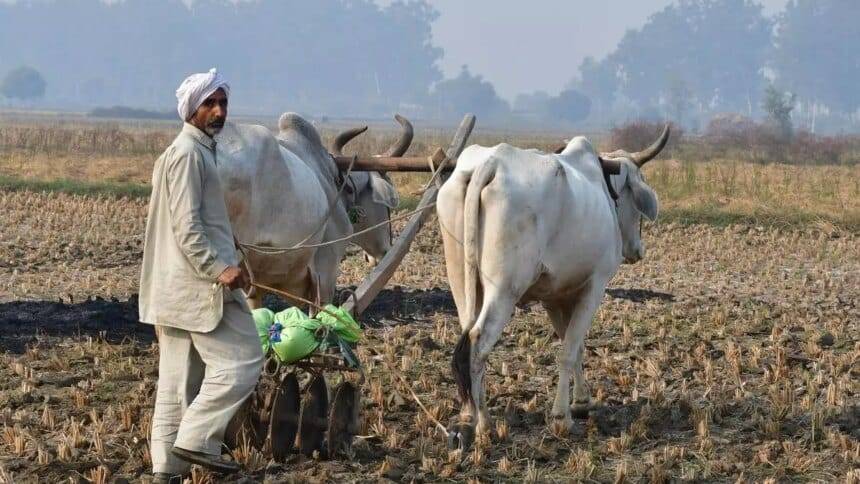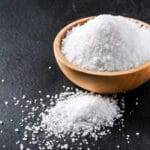Main Points In Hindi (मुख्य बातें – हिंदी में)
-
मौसमी प्रभाव: गुजरात में लंबे समय तक मॉनसून और सर्दियों की देरी से रबी फसलों की बुआई प्रभावित हुई है, जिससे अब तक औसत वार्षिक बुआई क्षेत्र का केवल 46% बुआई ही हो पाई है।
-
कृषि विभाग की सलाह: सरकार ने किसानों को बुआई में देरी करने की सलाह दी, क्योंकि उच्च तापमान रबी फसलों के अंकुरण के लिए अनुकूल नहीं था।
-
किसान की चुनौतियाँ: किसान संगठनों ने मौसमी बदलाव, खरीफ सीजन में नुकसान और डीएपी उर्वरक की कमी को बुआई में कमी के कारण बताया है, जबकि सरकार ने डीएपी की उपलब्धता में किसी कमी से इनकार किया है।
-
बुआई का क्षेत्रफल: गेहूं, चना, सरसों और आलू जैसी फसलों की बुआई में कमी आई है, जहां आलू की बुआई औसत क्षेत्र का 87% तक पहुंच गई है, जबकि अन्य फसलों का क्षेत्र अपेक्षाकृत कम है।
- जलवायु परिवर्तन के प्रभाव: बदलती जलवायु के कारण बेमौसम बारिश एक नियमित घटना बन गई है, जिससे जलवायु-संवेदनशील फसलों की बुआई में रुकावट आई है।
Main Points In English(मुख्य बातें – अंग्रेज़ी में)
Here are the main points from the article regarding the Rabi sowing situation in Gujarat:
-
Delay in Sowing: The prolonged monsoon and delayed winters have significantly affected Rabi sowing in Gujarat, with only 46% of the average annual sowing area of 46 lakh hectares being completed so far.
-
Crop Preferences: This Rabi season, wheat, chickpeas, mustard, and potatoes are the most favored crops. By November, approximately 21.44 lakh hectares had been sown, but authorities had advised farmers to delay planting due to high temperatures not conducive to crop germination.
-
Advice from Officials: Agricultural director S.J. Solanki mentioned that farmers were urged to postpone sowing since the climatic conditions were unsuitable. He expressed hope for an increase in sowing in the coming weeks.
-
Concerns from Farmers: Representatives of farmers’ organizations voiced concerns about the unusual weather patterns affecting traditional sowing timelines, with many farmers reporting losses during the Kharif season and citing a shortage of DAP fertilizer.
- Sowing Statistics: Latest government data indicate that wheat sowing is at only 36% of the average area, while potato sowing has reached 87%. Other crops like chickpeas and mustard have also seen varied levels of sowing, but climate-sensitive crops like cumin and fennel have been significantly under-sown.


Complete News In Hindi(पूरी खबर – हिंदी में)
राज्य सरकार के अधिकारियों का कहना है कि लंबे समय तक मॉनसून और सर्दियों की देरी से शुरुआत ने गुजरात में रबी की बुआई को प्रभावित किया है। अब तक औसत वार्षिक बुआई क्षेत्र 46 लाख हेक्टेयर में से केवल 46 प्रतिशत बुआई ही पूरी हो पाई है।
जबकि इस रबी सीजन में गेहूं, चना, सरसों और आलू सबसे पसंदीदा फसलें लगती हैं, 21.44 लाख हेक्टेयर में बुआई पूरी हो चुकी है। “इस साल बुआई में देरी का मुख्य कारण मौसम संबंधी विसंगतियाँ हैं। इस साल अक्टूबर तक बारिश जारी रही. गुजरात सरकार के कृषि निदेशक एसजे सोलंकी ने बताया, ”हमें किसानों को बुआई में देरी करने की सलाह भी जारी करनी पड़ी क्योंकि रबी की बुआई के लिए तापमान अधिक था।” व्यवसाय लाइन.
नवंबर में गुजरात सरकार ने किसानों को एक सलाह जारी कर रबी की बुआई में देरी करने को कहा क्योंकि सर्दियाँ शुरू नहीं हुई थीं और अक्टूबर-नवंबर के दौरान राज्य में रहने वाला उच्च तापमान रबी फसलों के अंकुरण के लिए आदर्श नहीं था। सोलंकी ने कहा, ”हम उम्मीद कर रहे हैं कि आने वाले सप्ताह में रबी की बुआई में तेजी आएगी।”
- यह भी पढ़ें: रबी की बुआई में तेजी आने से भारत में गेहूं का रकबा बढ़ा
हालाँकि, किसान संगठनों के प्रतिनिधियों की राय अलग है। “आमतौर पर, नवंबर के अंत या दिसंबर के पहले सप्ताह तक, गुजरात में रबी की अधिकांश बुआई समाप्त हो जाती है। यह साल अलग रहा. मानसून के लंबे समय तक खिंचने से किसानों को खरीफ सीजन के दौरान नुकसान हुआ है और राज्य के कई किसानों ने डीएपी की कमी की भी शिकायत की है। इसलिए, कई किसानों ने पिछले वर्षों की तुलना में कम बुआई की है, ”आप नेता और किसानों के संगठन खेदुत एकता मंच के संस्थापक सागर रबारी ने कहा।
“बदलती जलवायु के कारण, सर्दियों के दौरान बेमौसम बारिश एक नियमित घटना बन गई है। यह किसानों को जीरा, इसागबोल और सौंफ़ जैसी जलवायु-संवेदनशील फसलें लेने से रोकता है, ”रबारी ने कहा।
हालाँकि, गुजरात सरकार के अधिकारी डीएपी की किसी भी कमी से इनकार करते हैं। “कोई कमी नहीं है. ऐसा हो सकता है कि कुछ केंद्रों में अस्थायी कमी देखी गई हो, लेकिन उसे तुरंत दूर कर लिया गया। वास्तव में, पिछले साल की तुलना में इस साल गुजरात में 11,000 टन अधिक उर्वरक बेचे गए हैं, ”कृषि विभाग के सोलंकी ने कहा।
- यह भी पढ़ें: केंद्र ने डीएपी उपलब्धता बढ़ाने के लिए काम किया, वैश्विक आपूर्तिकर्ताओं को दोषी ठहराया
गुजरात सरकार द्वारा सोमवार को जारी आधिकारिक बुआई के आंकड़ों से पता चलता है कि गुजरात में किसानों ने 4.85 लाख हेक्टेयर से अधिक सिंचित और असिंचित क्षेत्र में गेहूं की बुआई की है, जो औसत क्षेत्र का केवल 36 प्रतिशत है। सीजन के औसत की तुलना में आलू की बुआई राज्य में सालाना बुआई के औसत रकबे के 87 फीसदी तक पहुंच गई है. इस वर्ष किसान 1.14 हेक्टेयर आलू की बुआई कर चुके हैं। चना और सरसों अन्य पसंदीदा फसलों में से हैं, राज्य में चने की बुआई 3.87 लाख हेक्टेयर से अधिक में हुई है, जबकि सरसों की बुआई 1.8 लाख हेक्टेयर में हुई है।
जबकि जीरा जैसे मसाले सालाना कवर किए गए 3.81 लाख हेक्टेयर में से 55 प्रतिशत से अधिक में बोए गए हैं, इस साल सौंफ़ और इसागबोल की बुआई उनके औसत बुआई क्षेत्र क्रमशः 73,000 और 19,000 हेक्टेयर का केवल एक चौथाई ही छू पाई है।
Complete News In English(पूरी खबर – अंग्रेज़ी में)
The state government officials in Gujarat have indicated that the prolonged monsoon and the late onset of winter have impacted the sowing of Rabi crops. So far, only 46% of the average annual sowing area of 4.6 million hectares has been completed.
For this Rabi season, wheat, chickpeas, mustard, and potatoes are the most commonly planted crops, with sowing completed on 2.144 million hectares. “The main reason for the delay in sowing this year is the weather inconsistencies. Rain continued until October. We’ve had to advise farmers to delay sowing because it was too warm for Rabi crops,” said SJ Solanki, the Director of Agriculture for Gujarat.
In November, the Gujarat government advised farmers to postpone Rabi sowing due to the lack of cold weather and high temperatures during October and November, which are not ideal for seed germination. Solanki expressed hope that sowing will pick up speed in the coming weeks.


However, representatives from farmers’ organizations have a different viewpoint. They noted that usually by the end of November or the first week of December, most Rabi sowing in Gujarat is completed. This year has been different. The prolonged monsoon led to losses during the Kharif season, and many farmers reported a shortage of DAP fertilizer, resulting in reduced sowing compared to previous years, according to Sagar Rabari, a leader with the farmers’ organization Khedut Ekta Manch.
Rabari also pointed out that due to changing climate conditions, unseasonal rains during winter have become common, which discourages farmers from planting climate-sensitive crops like cumin, isabgol, and fennel.
On the other hand, government officials deny any shortage of DAP. “There is no shortage. Some centers may have experienced temporary shortages, but that has been resolved quickly. In fact, this year, Gujarat sold 11,000 tons more fertilizer compared to last year,” Solanki stated.
According to the official sowing data released by the Gujarat government, farmers have sown wheat on over 485,000 hectares, which is only 36% of the average area. Potato sowing has reached 87% of the average area, with farmers planting on 1.14 million hectares. Chickpeas and mustard are also popular, with chickpea sowing at over 387,000 hectares and mustard at 180,000 hectares.
While over 55% of the annual area for spices like cumin has been sown, sowing for fennel and isabgol has reached only about 25% of their average areas, with respective sowings of 73,000 and 19,000 hectares.
Source link




